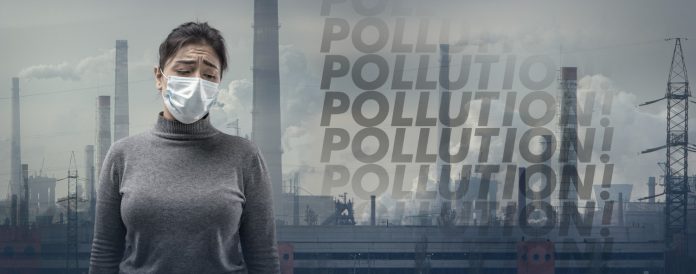There is a deep and dangerous relationship between pollution and human health that has a significant impact on the well-being of individuals and communities. As industrialization and modernization take center stage, pollution has become a growing concern that needs immediate attention. This article explores the harmful effects of pollution on human health and explores the different types of pollution, their sources and measures to reduce their effects.
In simple words pollution refers to the presence of harmful substances or pollutants in the environment which can be harmful to living beings. While some pollution is naturally occurring, human activities have led to a rapid increase in pollution levels, which has adverse effects on both the environment and human health. Understanding the impact of pollution on human health is important for devising effective strategies to combat this global challenge.
Understanding Pollution and Its Types
Pollution comes in various forms, each with its own set of consequences. The four main types of pollution include:
Air Pollution
Air pollution occurs when harmful gases, particulate matter, and chemicals are released into the atmosphere, contaminating the air we breathe. The sources of air pollution are diverse, ranging from vehicle emissions and industrial activities to deforestation and burning of fossil fuels.
Water Pollution
Water pollution results from the contamination of water bodies such as rivers, lakes, and oceans by harmful substances like chemicals, sewage, and industrial waste. It not only affects aquatic life but also poses a serious threat to human health, especially in areas where clean water is scarce.
Soil Pollution
Soil pollution refers to the degradation of soil quality due to the presence of pollutants such as heavy metals, pesticides, and other harmful chemicals. This type of pollution can lead to a decline in agricultural productivity and can contaminate the food chain.
Noise Pollution
Noise pollution occurs when the sound levels in the environment exceed the normal threshold, causing discomfort and health issues for humans and animals alike.
Sources of Pollution
Understanding the sources of pollution is essential to address the issue effectively. Some of the primary sources of pollution include:
Industrial Emissions
Industries release large amounts of pollutants into the air and water during their manufacturing processes. These emissions contribute significantly to air and water pollution, affecting the health of nearby residents.
Vehicle Exhaust
The burning of fossil fuels in vehicles releases harmful gases and particulates into the atmosphere, contributing to air pollution. The proximity of roads and highways to residential areas exacerbates the health impact.
Agricultural Practices
The use of pesticides, fertilizers, and other chemicals in agriculture can contaminate water sources and soil, leading to both water and soil pollution.
Waste Disposal
Improper waste disposal, such as dumping of waste in rivers or oceans, not only leads to water pollution but also harms marine life and the overall ecosystem.
Impact of Pollution on Human Health
The relationship between pollution and human health is undeniable, with numerous adverse effects on the well-being of individuals. Some of the health issues caused by pollution include:
Respiratory Problems
Air pollution, particularly the presence of fine particulate matter, can lead to respiratory problems such as asthma, chronic bronchitis, and even lung cancer.
Cardiovascular Diseases
Pollution can also have severe effects on the cardiovascular system, increasing the risk of heart attacks, strokes, and hypertension.
Neurological Disorders
Exposure to certain pollutants has been linked to neurological disorders, including cognitive decline and developmental issues in children.
Cancer
Long-term exposure to various pollutants has been associated with an increased risk of cancer, particularly lung and bladder cancer.
Vulnerable Groups
Certain groups are more susceptible to the adverse effects of pollution:
Children and the Elderly
Children and the elderly are particularly vulnerable to pollution-related health issues due to their weaker immune systems and developing or weakened organs.
People with Pre-existing Conditions
Individuals with pre-existing health conditions, such as respiratory diseases, heart problems, or compromised immune systems, are more at risk of suffering severe health consequences due to pollution.
6. Indoor Air Pollution
While outdoor pollution is well-known, indoor air pollution is also a significant concern:
Effects of Indoor Pollution on Health
Indoor air pollution can result from household products, smoking, and inadequate ventilation, leading to respiratory problems and other health issues.
Ways to Improve Indoor Air Quality
Proper ventilation, use of air purifiers, and reducing the use of harmful chemicals indoors can significantly improve indoor air quality.
Reducing the Health Impact of Pollution
Addressing pollution-related health issues requires collective efforts:
Government Initiatives
Governments play a vital role in implementing policies and regulations to curb pollution levels and promote cleaner technologies.
Individual Actions
Individuals can contribute by adopting eco-friendly practices, using public transportation, and reducing waste generation.
Conclusion
The relationship between pollution and human health is intricate and concerning. Pollution, in its various forms, poses serious health risks, affecting the respiratory, cardiovascular, and neurological systems, among others. Vulnerable groups such as children, the elderly, and individuals with pre-existing conditions are at higher risk. Taking proactive measures to combat pollution, both on a governmental and individual level, is crucial to safeguarding human health and ensuring a cleaner, healthier future.
FAQs
- Q: Can pollution lead to cancer?
- A: Yes, long-term exposure to certain pollutants can increase the risk of cancer, particularly lung and bladder cancer.
- Q: Are children more susceptible to pollution-related health issues?
- A: Yes, children are more vulnerable due to their developing immune systems and organs.
- Q: How can individuals improve indoor air quality?
- A: Proper ventilation, using air purifiers, and reducing the use of harmful chemicals indoors can significantly improve indoor air quality.
- Q: What are the main types of pollution?
- A: The main types of pollution include air pollution, water pollution, soil pollution, and noise pollution.
- Q: What can governments do to address pollution?
- A: Governments can implement policies and regulations to curb pollution levels and promote cleaner technologies.

